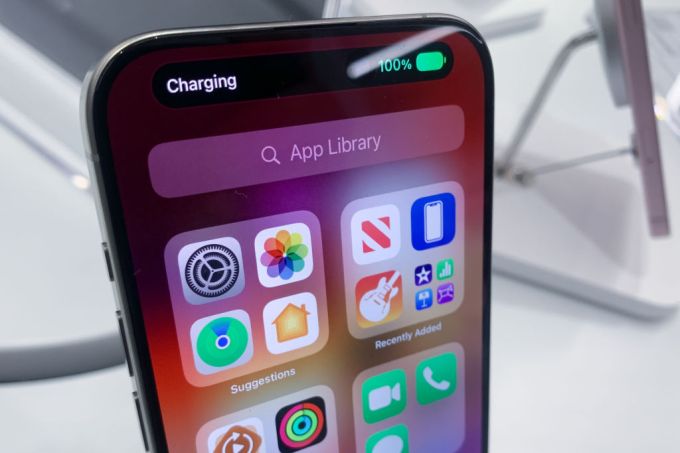This week, OpenAI revealed that apps can now function right within ChatGPT, allowing users to arrange trips, compose playlists, and alter designs without the need to jump between various apps. Some promptly hailed it as the app platform of the future — forecasting a world driven by ChatGPT where Apple’s App Store becomes outdated.
However, even though OpenAI’s app platform poses a growing challenge, Apple’s concept for a revamped Siri — although still significantly delayed — might still work to its advantage.
Ultimately, Apple already has control over the hardware, the operating system, and has approximately 1.5 billion iPhone users worldwide, compared to ChatGPT’s 800 million weekly active users. If Apple’s gamble is successful, it could position the iPhone maker to not only preserve its dominance in the app industry but also modernize how we engage with apps in the AI age.
Apple intends to eliminate the app icon without removing the app itself. Its AI-driven computing vision — presented at its developer conference last year — would see iPhone users interact with a transformed version of Siri and a redesigned system that modifies how you use apps on your device. (Envision less tapping and more speaking.)
Apps are passé, long live apps?
It’s a notion that has been gaining traction.
Arranging small tappable icons on your iPhone’s Home Screen to simplify access to online information represents an outdated approach to computing. Intended to mimic a smaller version of a computer’s desktop, apps are progressively becoming a less prevalent means for users to engage with numerous preferred online services.
Nowadays, consumers are just as inclined to seek a recommendation or insight from an AI assistant as they are to conduct a Google search or open a dedicated, single-function app, such as Yelp. They’ll verbally instruct their smart speakers or Bluetooth-connected AirPods to play their desired music; they’ll query a chatbot for business details or a synopsis of reviews for a recently released film or show.
Techcrunch event
San Francisco
|
October 27-29, 2025
The AI, a vast language model trained using web-scraped information and beyond, ascertains the user’s information needs and furnishes a response.
This is debatably more straightforward than sifting through Google’s search results to locate the correct link containing the answer. (Google itself acknowledged this over a decade ago when it began presenting answers to user inquiries directly on the search results page.)
AI is frequently also simpler than locating the appropriate app on your now-cluttered iPhone, opening it, and then engaging with its user interface — which differs across apps — to accomplish your task or obtain an answer to your query.

Nevertheless, ChatGPT’s app system, while apparently improving upon this model, is still restricted to the ChatGPT user experience. It necessitates that consumers engage in a chatbot-style interface to utilize their apps, which might demand user training. To initiate an app, you must specify it as the initial word of your prompt or otherwise mention the app by name to generate a button that encourages you to “use the app for the answer.” Following this, you must input a precise query. (According to initial tests conducted by Bloomberg, if you err in this regard, you could become stuck on a loading screen displaying no results!)
We must contemplate: is this the trajectory of apps, or merely the direction while there is no alternative competition? Once another solution emerges — one that is integrated into your iPhone, no less — will consumers persist in using ChatGPT, or are they still amenable to giving Siri another opportunity? We remain uncertain, but we would not dismiss Apple prematurely, despite Siri possessing a considerable negative reputation to overcome at this juncture.
Siri may be a source of embarrassment in its current state, but Apple’s broader ecosystem offers advantages. To begin, consumers already possess the apps they wish to use on their device or are aware of how to locate them on the App Store, if not. They have been using many of these apps for an extended period. Muscle memory is a significant factor!
In the meantime, there are a few obstacles to initiating use of ChatGPT’s app platform.

It is necessary to install the relevant app, naturally; subsequently, you are required to link the app to ChatGPT by navigating through a permission screen filled with warnings. This procedure necessitates that you authenticate with the app using your current username and password, and to input the two-factor authentication code, if applicable.
Following this one-time configuration, processes should become more streamlined. For instance, after generating a Spotify playlist utilizing AI, it can be launched within the Spotify app with a single tap.
Nonetheless, this experience will not significantly diverge from Apple’s strategies if Apple can successfully execute its promises. Apple states that you will have the ability to communicate with or text Siri to govern your apps.

The OpenAI app model also has further drawbacks. You are limited to engaging with one app at a time, as opposed to being able to alternate between apps — a capability that could prove advantageous when comparing prices or deliberating between a hotel room and an Airbnb.
Furthermore, utilizing apps within ChatGPT diminishes the branding, design, and identity that consumers connect with their favored apps. (For those who dislike the increasingly cluttered nature of Spotify’s app, this might be viewed as a positive development. However, others may hold a different perspective.) Additionally, in certain instances, employing the mobile app version to achieve your objectives may still be more convenient than employing the ChatGPT app version due to the greater adaptability afforded by the former.
In conclusion, persuading users to switch app platforms could be challenging when there is no apparent benefit to utilizing apps within ChatGPT — apart from the novelty of the capability.
Can Apple save Siri’s reputation with AI features?
During its WWDC 2024 demonstration — which Apple asserts was not merely “demoware” — the company showcased how the apps would operate under this novel system and how they could leverage additional AI functionalities such as proofreading.
Most notably, Apple informed developers that they will be able to capitalize on a selection of its AI capabilities without necessitating supplementary effort — such as a note-taking app employing proofreading or rewriting tools. Moreover, developers who have already integrated SiriKit into their apps will possess enhanced capabilities in terms of enabling users to take action within their apps. (SiriKit, a toolkit designed to facilitate interoperability between apps and Siri and Apple’s Shortcuts, has been utilized by developers since iOS 10.)
These developers will observe immediate enhancements upon the release of the new Siri.

Apple has indicated that it intends to prioritize categories such as Notes, Media, Messaging, Payments, Restaurant Reservations, VoIP Calling, and Workouts, initially.
Apps within these categories will possess the capacity to empower their users to perform actions through Siri. Concretely, this implies that Siri will be capable of initiating any element from an app’s menus. As an illustration, you could instruct Siri to view your presenter notes within a slide deck, and your productivity app would respond accordingly.
Additionally, the apps would possess the ability to access any text presented on the page through Apple’s standardized text systems. This could render app interactions more intuitive, without necessitating that users provide precisely worded prompts or commands. For instance, if you had a reminder to extend birthday wishes to your grandfather, you could utter “FaceTime him” to enact that action.

Apple’s existing Intents framework is also undergoing updates to gain access to Apple Intelligence, encompassing an even wider array of apps across categories such as Books, Browsers, Cameras, Document Readers, File Management, Journals, Mail, Photos, Presentations, Spreadsheets, Whiteboards, and Word Processors. Within this context, Apple is developing novel “Intents” that are pre-defined, trained, and tested, and rendering them accessible to developers.
This signifies that you could instruct the photo-editing app Darkroom to apply a cinematic filter to an image via Siri. Furthermore, Siri will possess the capability to propose an app’s actions, assisting iPhone users in discovering the potential of their apps and executing those actions.
Developers have been embracing the App Intents framework, which was introduced in iOS 16, due to its provision of supplementary functionality for integrating their app’s actions and content with other platform features, encompassing Spotlight, Siri, the iPhone’s Action button, widgets, controls, and visual search capabilities — not solely Apple Intelligence.






